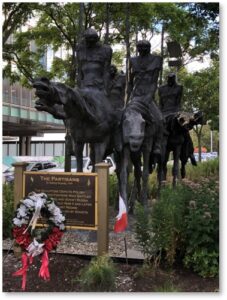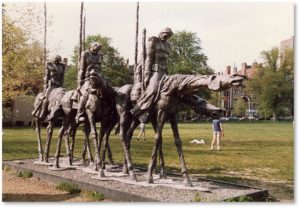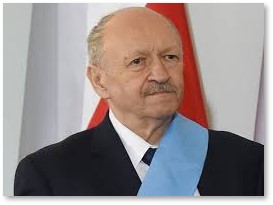If you’re following the saga of statues moving around Boston, you know that the city moved Robert Burns and his collie, Luath, for the second time. On October 30, they are returned from their spot in Winthrop Square to their original location in the Back Bay Fens.
Such a Deal
Unveiled in 1920, the statue by Henry Hudson Kitson originally stood on a grassy slope overlooking the Muddy River near the Westland Avenue entrance to the Fens. It had a good home there until—get this—a real-estate developer wanted Robbie and Luath moved to Winthrop Square. In a tribute to the power of developers in Boston, the city quietly relocated the statue without benefit of any public hearings. You can read the sad story in this Boston Globe article on the return of Robbie Burns to the Fens.
“Statue of Scottish poet Robert Burns will be coming home to Back Bay Fens.”
But wait, there’s more. As I said in last week’s post, Boston’s statues seem to peregrinate around the city with surprising frequency. Size and weight present no object.
The Partisans in the Seaport
Like The Naked Guy, this statue, officially called “The Partisans,” also has a nickname: The Starving Horses. If you lived in Boston in the seventies and eighties, you couldn’t miss it.
This line of five emaciated men holding lances and mounted on equally scrawny horses plodded along the Charles Street side of Boston Common near the corner of Beacon Street.
I never listed The Partisans as one of Boston’s Missing because I knew where it had gone: to the Seaport District. The city first placed it on MBTA property near the Convention Center on Summer Street and next to the World Trade Center T Station. Since then, it has been moved to ground level in the center median where D Street intersects Congress. No small feat considering that it weighs 8,000 pounds.
Honoring Freedom Fighters
Polish-born artist Andrzej Pitynski created the cast-aluminum sculpture in 1979, after immigrating to the U.S. Mr. Pitynski was born in 1947 to Polish parents who really were partisans.
One can understand the sculptor’s fierce resistance to Poland’s many oppressors when you learn that the Communists shot Mr. Pitynski’s grandmother and captured, imprisoned, and tortured his father.
When Mr. Pitynski obtained an American visa and emigrated from Poland, he said:
“As I stepped on to that American plane on October 3, 1974, I looked back and smiled to myself. I knew that I would never return to that Poland, to those Communist bastards. And for the first time in my life, I felt really free.”
A Tribute to the Freedom Fighters
 A bronze plaque on The Partisans reads:
A bronze plaque on The Partisans reads:
“This sculpture depicts Polish underground fighters who battled the German and Soviet forces during World War II and later the Communist regime of Poland.”
“The Partisans” thus provides a symbolic representation of the Polish freedom fighters who resisted the German occupation of Poland during the Nazi era and beyond. I sometimes see flowers and wreaths placed at the horses’ feet or around the neck of the lead horse to honor the sacrifices of freedom fighters everywhere.
The Statue Moves to the Seaport
Sent to Boston in 1983 on a short-term loan, the work was originally sited in the Boston Common. It never really fit there, however, because its modern style was inconsistent with the architecture of its surroundings as well as the history of the Shawmut Peninsula.
The foundation that owns the sculpture loaned it to Boston for six months but then never reclaimed it. “The Partisans,” now as homeless as its subjects, remained on display at the foot of the Boston Common until 2006, when the city placed it in storage.
That same year, the Massachusetts Bay Transportation Authority extended the loan agreement and provided the statue with a new home. “The Partisans” fits better with the Seaport’s modern style and it is more consistent with the tall contemporary buildings around it.
I just wish those horses didn’t look so hungry.



